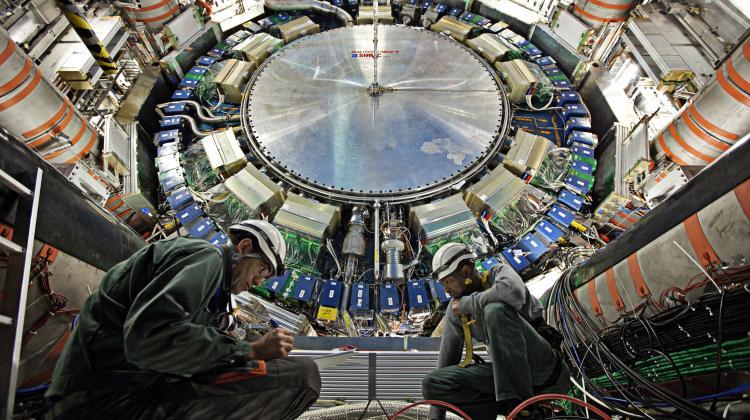Research into ‘Most Elusive Particles Known to Man’ Given Go Ahead
 Credit: Fotolia
Credit: Fotolia
A new experiment that will investigate the properties of the lightest particles of matter, known as neutrinos, has been approved by the European Organization for Nuclear Research (CERN). Dr. Sebastian Trojanowski from the National Centre for Nuclear Research (NCBJ) played an important role in the project.
In a press release, the National Centre for Nuclear Research said: ”This is the first experiment of its type with the Large Hadron Collider (LHC). It will begin a new era of neutrino research. The planned FASERν experiment (at the end of the name is the Greek letter nu) is not only the first such detector at LHC, but also in the history of similar experiments, in which two streams of particles flying in opposite directions collide with each other.”
According to the centre, this opens a fascinating new era in neutrino research, the most elusive of the elementary particles known to man.
Neutrinos produced at LHC are the most energetic neutrinos ever produced by humans. They can only be compared to neutrinos created in extreme phenomena, such as collisions of high-energy cosmic rays with the Earth`s atmosphere.
The FASERν detector will be part of a larger, recently approved FASER experiment, of which Dr. Sebastian Trojanowski affiliated with the National Centre for Nuclear Research and the University of Sheffield in the United Kingdom is one of the four originators.
"FASERν is an extremely small detector compared to typical neutrino experiments," says Dr. Trojanowski, who was directly involved in the preparatory work leading to the approval of the new detector. "It will be a cuboid, slightly over a metre long and only 25 cm wide. The small size could be achieved by precisely choosing the location of the detector, in the place where the majority of the very strong neutrino beam produced in the LHC goes at the point of proton collision in the ATLAS detector."
The installation of the new detector can be carried out very quickly, and the collection of the first data will begin with the relaunch of the LHC in 2021. "FASERν may also pave the way for neutrino programmes at future colliders, and the results of these programmes could feed into discussions of proposals for much larger neutrino detectors," says Dr. Jamie Boyd, one of the leaders of FASER collaboration at CERN near Geneva, quoted in the release.
Although the new FASERν detector is a separate research instrument compared to the main FASER detector, approved earlier this year, the interaction of both parts of the experiment can play a key role in the research on neutrino physics.
"Additionally, in a group of theoretical physicists from the National Centre for Nuclear Research and the SLAC laboratory in the United States, we have already conducted the first analysis of exciting prospects for the discovery of completely new elementary particles in cooperation with both parts of the FASER experiment. We are planning further such research in the future," explains Dr. Trojanowski.
According to the National Centre for Nuclear Research, high-energy neutrino research will not only help to better understand the course of turbulent events constantly occurring at the interface of the Earth`s atmosphere with space, it will also shed more light on the nature of the interactions of these difficult to detect particles.
Theoretical speculations about the existence of neutrinos date back to the 1930s, but their first experimental observation took place almost a quarter of a century later. After that, a theoretical description of the interaction of neutrinos with other particles of matter was developed, which, however, still has not been thoroughly tested experimentally, especially in the area of high energy characteristic of the FASERν detector.
One of the main objectives of the experiment will be to check whether accurate measurements of neutrino properties in this energy range are consistent with theoretical predictions and current knowledge, or perhaps it is time to verify these views.
"The study of neutrinos is one of the specialties of Polish physicists and several cooperating Polish centres. The Warsaw Neutrino Group, of which scientists from the National Centre for Nuclear Research are an important part, is taking part in the great T2K neutrino experiment in Japan and is preparing another experiment with the planned, more powerful HyperKamiokande detector. Compared to the large neutrino experiments located in mines like T2K, or in the Antarctic ice or oceans, FASERν is a new quality and should give scientists a valuable and relatively cheap tool to study the world that surrounds us," the National Centre for Nuclear Research said.
PAP - Science in Poland
agt/ kap/
tr. RL
Przed dodaniem komentarza prosimy o zapoznanie z Regulaminem forum serwisu Nauka w Polsce.















